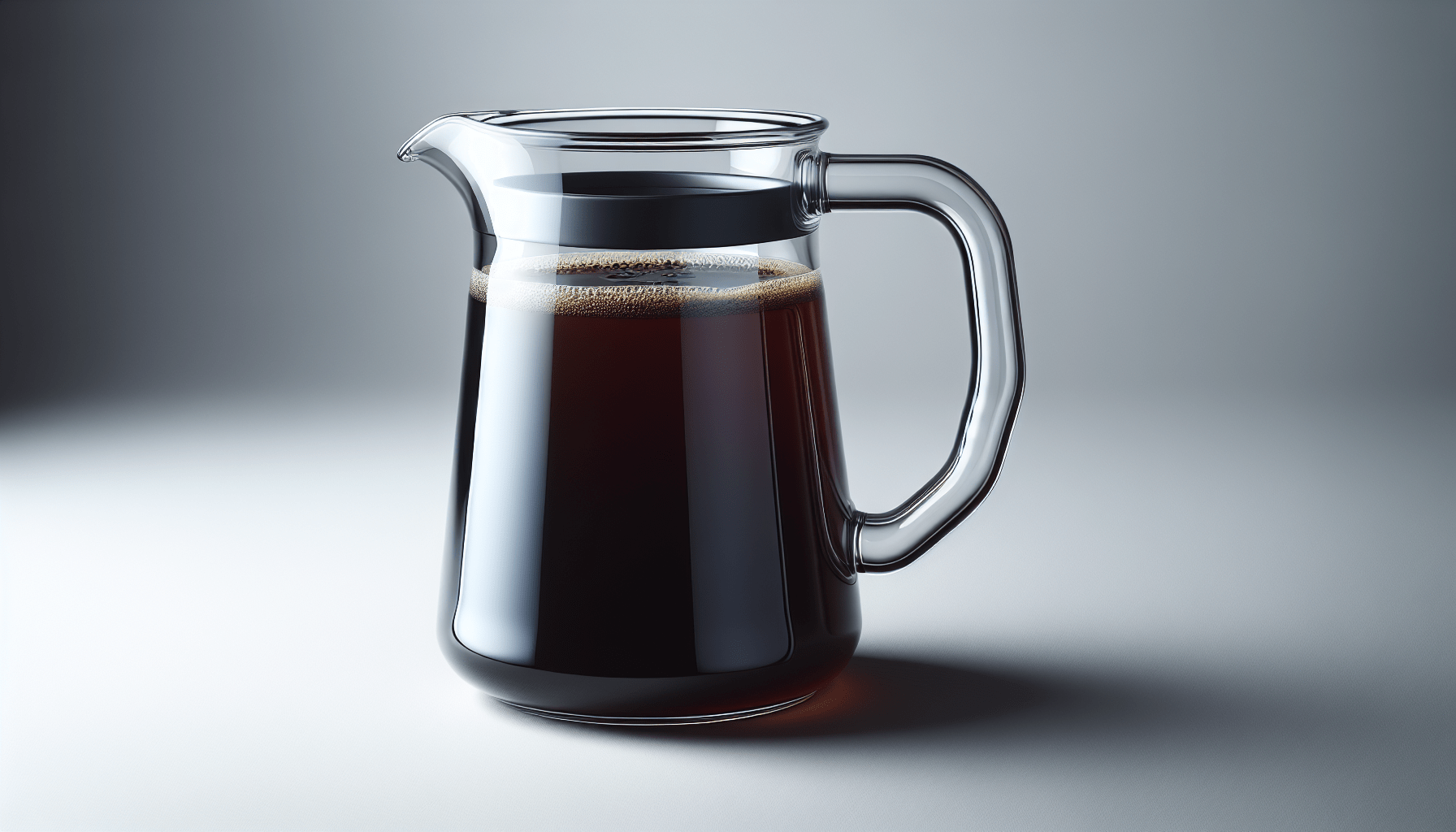So you’ve got yourself a cold brew maker and you’re eager to make the perfect cup of ice-cold goodness. But wait, are there any special techniques you should know about? Well, wonder no more! In this article, we will explore the nifty tricks and tips that will elevate your cold brew game to new heights. From grinding your coffee beans to the ideal steeping time, we’ve got you covered. So sit back, grab a cup of your favorite brew, and let’s dive into the world of cold brew making!
Choosing the right coffee and water
When it comes to making a delicious cold brew, selecting the right coffee beans and water is crucial. Begin by choosing high-quality coffee beans that are specifically recommended for cold brew. These beans are typically roasted for a longer period of time, resulting in a rich and smooth flavor profile that is perfect for this brewing method.
It’s important to opt for whole beans and grind them yourself for the freshest taste. Investing in a good burr grinder will allow you to achieve a consistent coarse grind, which is ideal for cold brew. This coarse grind ensures that the coffee isn’t over-extracted during the long steeping process, resulting in a less bitter and more flavorful brew.
Equally important is using the right water-to-coffee ratio. A general rule of thumb is to use a ratio of 1:4, meaning one part coffee to four parts water. However, feel free to experiment and adjust the ratio according to your personal taste preferences. Using filtered water will also help to enhance the overall taste and quality of your cold brew.
Preparing the cold brew maker
Before getting started with brewing your cold brew, it’s essential to prepare the cold brew maker correctly. First, ensure that the cold brew maker is clean and free from any residue or lingering flavors. Cleaning it thoroughly before each use will prevent any unwanted tastes from transferring into your brew.
Next, carefully assemble the cold brew maker according to the manufacturer’s instructions. This may involve attaching the filter or mesh, ensuring a secure fit to prevent any coffee grounds from escaping into the brew. Properly assembling the cold brew maker will ensure a smooth and hassle-free brewing process.
Consider pre-soaking the filter or mesh before adding the coffee grounds. This step helps to eliminate any potential paper or fabric taste that may affect the final flavor of your cold brew. Simply place the filter or mesh in a bowl of water for a few minutes before placing it in the cold brew maker.
Brewing process
The brewing process is where the magic happens in creating a delicious cold brew. Firstly, you have the option to use either cold or room temperature water. Cold water tends to result in a slightly slower extraction process, while room temperature water provides a faster extraction. Both options can yield great results, so it’s a matter of personal preference.
Determining the steeping time is another crucial aspect of the brewing process. It typically ranges from 12 to 24 hours, depending on the desired strength of your cold brew. You can start with a shorter steeping time and adjust it with subsequent batches until you find your perfect balance of flavors. Keep in mind that steeping for too long can lead to over-extraction and a bitter taste.
Feel free to experiment with different brewing methods to find the one that suits you best. For example, you can try using different types of containers, such as mason jars or specialized cold brew systems. Additionally, some enthusiasts swear by techniques like agitating the coffee grounds during steeping or utilizing a slow drip method for a unique flavor profile.
Filtering and extracting the cold brew
Once the steeping process is complete, it’s time to filter and extract your cold brew. Start by removing the coffee grounds from the liquid. This can be done through various methods, such as using a mesh sieve, cheesecloth, or a French press. The goal is to separate the smooth liquid from any remaining solids, ensuring a clean and sediment-free cold brew.
For an extra level of filtration, consider utilizing a secondary filtration method. This can involve pouring the cold brew through a paper filter or using a fine-mesh sieve to remove any fine particles that may have passed through the initial filter. This step contributes to a clearer and cleaner final product.
The extraction process is where you have control over the strength of your cold brew. If you prefer a stronger brew, you can allow the extraction process to continue for a little longer. On the other hand, if you desire a milder flavor, you can adjust the extraction time accordingly. It’s all about finding the perfect balance to suit your taste preferences.
Storing and serving the cold brew
Properly storing your cold brew is essential to maintain its freshness and quality. Transfer the cold brew to an airtight container, preferably glass, to keep out any air or unwanted odors. Store it in the refrigerator, where it can last for up to two weeks. This allows you to have a ready-to-drink cold brew whenever you desire a refreshing cup.
When it comes to serving, there are a few options to consider. You can serve your cold brew over ice for a refreshing and chilled experience. If you find the cold brew to be too concentrated, diluting it with a splash of water can help to balance the flavors. It’s all about personal preference and finding the right strength that suits your taste buds.
Additionally, don’t hesitate to get creative and add your favorite additives or flavorings to enhance the cold brew experience. Whether it’s a dash of milk or cream, a sprinkle of cinnamon, or a drizzle of flavored syrup, these additions can take your cold brew to the next level and make it a truly customized beverage.
Cleaning and maintenance
After enjoying your delicious cold brew, it’s important to clean the cold brew maker thoroughly to ensure a hygienic brewing experience for future batches. Disassemble the cold brew maker and rinse each component with warm water to remove any remaining coffee residue. Use a soft brush or cloth to gently scrub away any stubborn stains or deposits.
If you encounter any stubborn stains or odors that just won’t go away, there are a few tricks you can try. For stains, create a paste using baking soda and water, apply it to the stained area, and gently scrub until the stain fades away. To eliminate odors, rinse the cold brew maker with a mixture of water and white vinegar, then thoroughly rinse with clean water.
In terms of regular maintenance, it’s a good idea to periodically descale your cold brew maker. This can be done by running a solution of equal parts water and white vinegar through the brewing system, followed by a few cycles of plain water to remove any lingering vinegar taste. Regular descaling helps to keep your cold brew maker in optimal working condition.
Troubleshooting common issues
Sometimes, even with the best techniques, issues can arise when brewing cold brew. If you find your cold brew to be bitter or over-extracted, consider adjusting the brewing time. Steeping for a shorter period may help to mitigate these unwanted flavors. Additionally, ensure that you’re using a coarser grind and experimenting with different water-to-coffee ratios to find the perfect balance.
Clogged filters or slow dripping can also be frustrating. If you encounter this issue, try using a coarser grind or agitating the coffee grounds during steeping to prevent compacting. Using filters with larger pores or opting for a slow drip cold brew system may also help to alleviate these problems. Remember, troubleshooting is all about trial and error to find what works best for you.
Tips for enhancing the cold brew experience
If you’re looking to elevate your cold brew experience, there are a few tips and tricks you can try. Firstly, consider using specialty coffee beans to explore unique and complex flavors. Specialty beans sourced from different regions around the world can offer a whole new dimension of taste in your cold brew.
Adding spices or botanicals to your cold brew can also create interesting flavor profiles. Try incorporating flavors such as cinnamon, vanilla, or even lavender to infuse your cold brew with an aromatic twist. Remember to experiment with different quantities and combinations to find the perfect balance of flavors that complement the coffee.
Cold brew isn’t limited to just drinking on its own. Get creative and explore the world of cold brew recipes or cocktails. From creamy cold brew shakes to refreshing mojitos, the possibilities are endless. Mixing your cold brew with other ingredients allows you to create unique and refreshing beverages to enjoy all year round.
Experimenting with different cold brew variations
Part of the beauty of cold brew is its versatility and room for experimentation. Feel free to play around with different coffee-to-water ratios to find the strength that suits your taste. You can even try exploring different brewing temperatures, such as brewing at a slightly higher or lower temperature to see how it affects the flavor profile.
Another factor to experiment with is the steeping duration. By varying the steeping time, you can achieve different levels of extraction and strength in your cold brew. Start by adjusting the steeping time by increments of 30 minutes and take note of any changes in flavor. This way, you can fine-tune the brewing process to achieve your desired taste.
Benefits of using a cold brew maker
Using a cold brew maker comes with a range of benefits that make it a popular choice among coffee enthusiasts. One major advantage is the reduced acidity in cold brew compared to hot brewed coffee. The slow and gentle extraction process of cold brew results in a smoother and less acidic flavor profile, making it easier on the stomach and teeth.
Cold brew also boasts a longer shelf life compared to hot brewed coffee. Since it’s brewed with cold water, the growth of bacteria and spoilage is significantly slowed down. This means you can enjoy your batch of cold brew for longer, without worrying about it losing its freshness or developing off-flavors.
Furthermore, cold brew serves as a versatile base for creating other coffee beverages. Whether you want to make an iced latte, a creamy frappuccino, or a coffee-flavored cocktail, cold brew provides the perfect starting point. Its concentrated and bold flavor allows for endless possibilities, giving you the freedom to explore and enjoy a variety of coffee creations.
In conclusion, mastering the art of making cold brew involves various techniques and considerations. By choosing the right coffee beans and water, preparing the cold brew maker correctly, and understanding the brewing process, you can create a delicious and refreshing cold brew that suits your taste preferences. From filtering and extracting to storing and serving, each step plays a crucial role in achieving the perfect cold brew experience. Don’t be afraid to experiment, troubleshoot any issues, and enhance your cold brew journey with unique variations and personalized touches. Cheers to enjoying a smooth and flavorful cup of cold brew!




